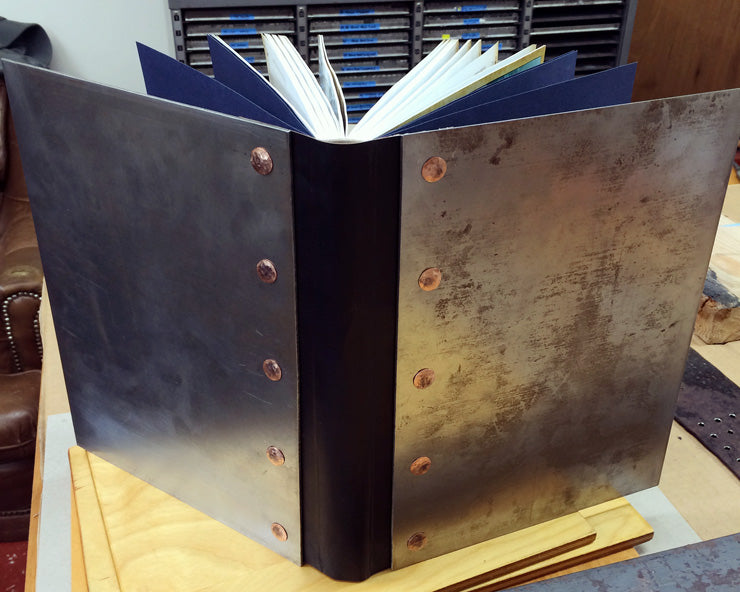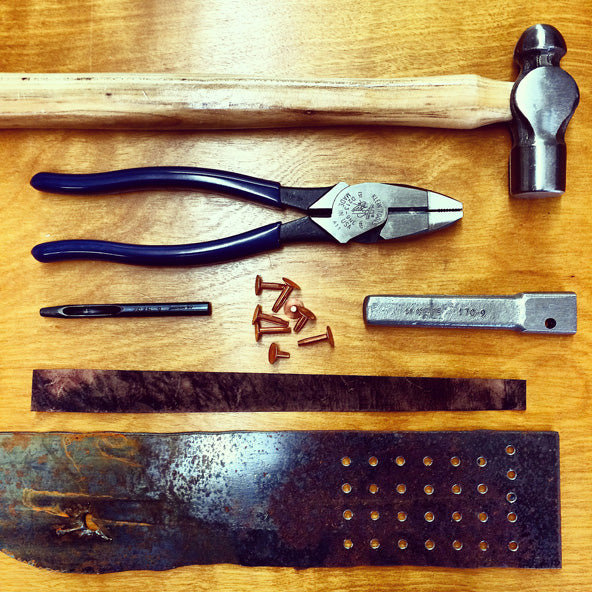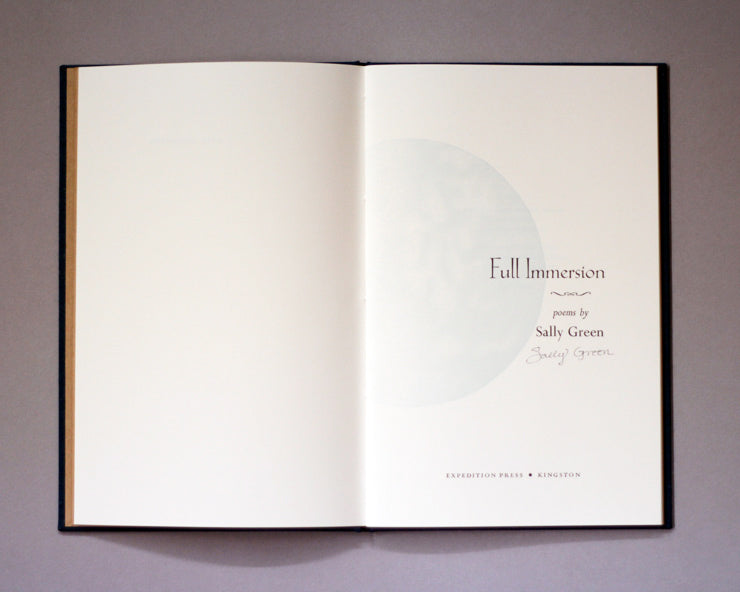Simplified Binding for Metal Books

The prototype! Leather hollow back spine and 16-gauge cold rolled mild steel attached with copper rivets.
I first came across this binding structure in the Penland Book of Handmade Books with their showcase of Eileen Wallace’s work. I was immediately inspired by her metal books and the broad range of cover materials she incorporates so seamlessly. Years later when I received a commission for steel books I thought of Eileen’s work and knew it was possible. 18 months and many prototypes and doubt-filled days later, I came up with something that works. Quite well, in fact. This blog post outlines the process I used, and the photos are from the final working prototype.
But first I need to say a huge thank you to Eileen Wallace. After consulting with several local wiser-than-me bookbinders, I contacted her with a few specific questions. She responded with kind enthusiasm and all the technical detail I could wish for. Eileen, this post is dedicated to you, and all the other craftspeople who care enough to go the extra mile to share what they know.
Lining the spine

Assuming you’ve got a heavy duty (1 inch+ thick) text block to go with your heavy duty covers, be sure to use sturdy endpapers. I used double folios of Canson Mi-Teintes sewn into the text block like any other signature. You need a double folio because the outer end sheet becomes part of the hinge and trimmed or torn off later. I consolidated the signatures with a layer of PVA, lined with muslin, and then airplane linen. The muslin is probably overkill considering the strength of the linen, but these books came with it already attached. Final layer was a piece of cardstock the width of the spine, applied with wheat paste to add stiffness. A note on airplane linen: it’s expensive! But this is the only material that’s directly attached to the spine AND the hinge, which means it bears a huge amount of structural importance. It’s worth it.
Gluing up the hinge

This a a lot like basic casing-in, except you don’t have to glue up the whole end sheet. I trimmed the linen and muslin to 1.5 inches wide, and cut a piece of leather the same height as the covers (1/16 inch square top and bottom) and a 1/4 inch or so wider than the linen. I then wrapped the text block in wax paper, thoroughly wet the leather with water, and molded it to the spine with a bone folder. I inserted blotter between the book block and the leather on both sides and left it to dry overnight under a board and brick. When the leather’s dry, insert wastepaper behind the first end sheet and glue away! One layer at a time, fully penetrating with PVA. Then a quick nip in the press and under weight to dry.

Trim, mark, and punch holes

This step assumes that you have your cover material, i.e. the steel in this case, completely ready to go: cut to size, holes drilled a 1/2 inch or so in from the edge, and whatever finish and edge treatment you desire already applied. For ideas on the finish front, check out these posts about etching steel and creating patinas in a pinch.
I trimmed the excess end sheet off the hinge along with a sliver of leather, taking care to not expose the inner layers of muslin and linen. I then laid the covers on the book block exactly as I wanted them to end up and used their holes as a template to mark the holes on the leather hinge. Once marked, I punched the holes with a hammer and leather punch (same size as the holes in my covers, of course), with the hinge open and resting on a scrap piece of wood underneath.
Final Assembly

Now for the fun part! And sore-forearm-inducing part. I hand-riveted these books with traditional copper rivets and a ball peen hammer, nothing fancy, just lined them up and hit them over and over again. The trick is to get the rivets as flat as possible on the inside of the covers. Well, okay, there are a few more tricks than that. To avoid the lip of the steel pulling up toward the spine and posing a sweater-snagging hazard, I pre-attached the covers with a 1/4 inch strip of double-sided tape, placed on the inside of the cover on the spine-side of the holes. I sanded the steel there a bit and roughed up the leather to help the tape adhere, lined up the cover on the hinge and put it in the nipping press briefly. Then I placed the rivets with the heads facing out, and set the burrs on the interior of the book. All that’s left is hammer, hammer, hammer. See my previous post on the joys of riveting.



